
Key Opinion Leaders
Day 1. Dr J.A. (Lulu) Skidmore
United Arab Emirates
Presentation
Dr. Skidmore graduated with a BSc (Hons) in Animal Science, (Wye College, University of London, UK. 1985), before spending five years at the Equine Fertility Unit in Cambridge, as a research associate specializing in equine reproduction. In 1991 she registered with the University of Cambridge (U.K.) and joined the Camel Reproduction Centre as a post-graduate research student, and successfully completed her PhD, “Reproduction in the dromedary camel,” in 1994 (University of Cambridge, UK).
Subsequently, she has remained as Scientific Director of the Camel Reproduction Centre in Dubai, leading a team of scientists covering all aspects of camel reproductive physiology and publishing papers in ovarian follicular dynamics, pregnancy and placentation, endocrinology throughout the cycle and pregnancy, maternal recognition of pregnancy, embryo transfer and management of recipients, hybridization of New and Old World Camelids and artificial insemination and semen preservation.

Lecture
Embryo cryopreservation and storage
A major challenge of embryo transfer in camels is synchronizing the donor and recipients, thereby the ability to cryopreserve or store embryos for 24 – 72 h is invaluable for reducing the need for such tight synchronization and enables embryos to be stored, or even transported elsewhere, for transfer at a later date. The latest techniques for embryo cryopreservation and storage at room temperature, 37°C and 4°C will be discussed.
Lecture
Challenges of Artificial insemination in camels.
One of the major problems of camel breeding is the overuse of elite male camels due to the high demand for their valuable genetics. Successful use of artificial insemination using fresh, cooled or frozen/thawed semen would enable more camels to be inseminated from one ejaculate, thereby reducing the workload of the males, and also semen could be transported nationally and internationally, spreading valuable genetics worldwide.
However, there are many challenges for AI to be successful in camels relating to collection of semen, handling and analysis of very viscous semen, use of the best extenders, protocols for cooling and freezing semen and also the correct treatment of female camels to ensure ovulation. These factors will be discussed.
Day 1. Dr Taher Kamal
Saudi Arabia
Presentation
Dr. Taher Kamal Osman brings over 12 years of experience in camel embryo transfer and reproduction. He began his career in Egypt, participating in the first large-scale bovine embryo transfer program at Milky's Farm. Later, he moved to Qatar, where he managed the embryo transfer lab at Tharb Camel Hospital.
Currently based in Saudi Arabia, Dr. Osman played a key role in the founding of Salam Veterinary Group, the largest veterinary hospital in the world, where he served as the manager of the Research and Development department. He is now the CEO of BIORASCO, a biotechnology company specializing in animal reproduction and cloning.

Lecture
Comprehensive Reproductive Techniques in Camels
In this session, Dr. Osman will present a detailed overview of both foundational and advanced reproductive techniques used in camels. Topics will include ultrasonography for diagnosing and treating infertility, synchronization protocols, and semen collection methods. He will also discuss advanced technologies such as the CASA system for semen analysis, embryo transfer techniques, in vitro fertilization (IVF), semen sorting for genetic enhancement, and somatic cell nuclear transfer (SCNT), offering attendees a comprehensive guide to modern reproductive management in camels.
Day 2. Dr. Tullis Madson
United Kingdom
Presentation
Dr. Tullis Matson has over 30 years of experience in equine Artificial Insemination (AI) and semen freezing. In 2000, he founded Stallion AI Services Ltd, one of Europe's most successful stallion collection centers, working with over 1,100 stallions across 51 breeds. Tullis specializes in advanced techniques like Post Castration Epididymal Sperm Harvesting and has contributed to conservation efforts for endangered species, including rhinos and elephants. In 2008, he launched Equine Reproduction Supplies, the UK's largest equine AI equipment distributor. He has worked with the Rare Breeds Survival Trust since 2002 and received several awards for his contributions to genetic bio-diversity. Tullis also founded Nature’s SAFE, a charity focused on cryopreserving cells from endangered species to prevent extinction.
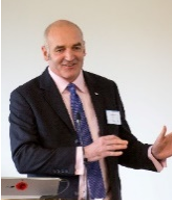
Lecture
Practical Expertise and Tips from a Stallion Stud expert and Exploring other breeding techniques
Dr. Tullis Matson, a leading stallion stud expert, has vast experience in equine breeding and reproductive techniques. As the founder of Stallion AI Services, he has worked with renowned stallions, developing expertise in artificial insemination, semen collection, and stallion management. Dr. Matson is known for employing advanced breeding techniques like sexed semen and cryo-preservation, particularly focusing on the preservation of rare and endangered breeds.
Day 2. Mélina Craus / Guy Delhomme / Gaëtan Vetea Plichart
France
Presentation
Experts from IMV Technologies are also participating in this event. Mélina Craus is a specialist in Equine Artificial Insemination and Semen Analysis, while Dr. Guy Delhomme is a globally recognized authority in Artificial Insemination, with expertise across multiple species. Additionally, Gaëtan Vetea Plichart, DVM and Field Application Specialist, will play a key role during the workshop sessions as part of the IMV Technologies teams.
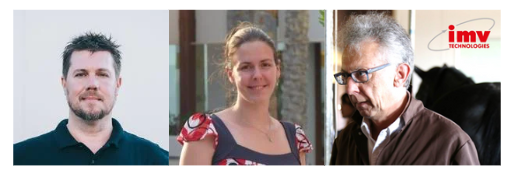
Lecture
Join us for an in-depth exploration of advanced equine breeding techniques across three key sessions:
Optimizing Semen Quality in Fresh and Cooled Processes: We'll break down the composition of media used and explain the role of each ingredient to ensure optimal semen quality.
Enhancing Freezing Processes: This session will review the key steps of freezing semen and offer practical tips, such as whether to use a cushion during centrifugation for better results.
Expert Tips from a Stallion Stud Specialist: Get valuable insights from a specialist as on stallion management and explore alternative breeding techniques for improved success.
Day 3. Dr. Aleksandar Milovanovic
Serbia
Presentation
Dr. Milovanovic has extensive expertise in semen quality control using classical laboratory methods such as flow cytometry, CASA, and cytomorphologic examination. He is skilled in on-field reproductive control of male and female animals, including male animal licensing, and conducts milk progesterone tests on dairy farms. His experience includes immunity control in reproduction, specifically analyzing sperm-specific immunity and nonspecific immunity through neutrophil phagocytosis and respiratory burst using flow cytometry.
He is also proficient in diagnosing reproductive disorders and assessing health status in dairy cattle, sheep, rams, boars, and dogs. Additionally, Dr. Milovanovic has implemented computerized systems to monitor and analyze health, productivity, and reproduction data, aiding modern dairy cow management. He has participated in the Cochran Fellowship Training program in Dairy Genetics and Management (USA) organized by the USDA and mastered techniques for preparing and using enzyme immune tests (EIA) for direct progesterone determination in whole milk, including training in Japan.
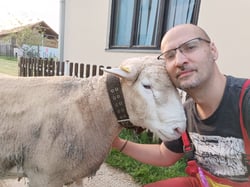
Lecture
Genetic gain in Small Ruminants? Are they followed by Reproductive Technology
Sheep are declared as low-input/low-income animals and this practice has been preserved for centuries in most countries. The genetic gap between selected top animals and animals on farms is more evident in sheep compared to other animal species. Few states invested in scientific, genetic, and technical improvement keeping progress through farmers' associations. Individual companies are rarely involved as the main leaders of progress. It can be said that without reproductive interventions, the utilization of the productive potential of sheep in most herds is only 50%. Dr. Milovanovic will present the standard and new reproductive techniques for the improvement of sheep breeding. Most are now available even at the basic farm level.
Lecture
Milk and Meat Production in Specialized Breeds of Small Ruminants has caught up with large ruminants. But what about Reproductive Technology?
The last genetic gain in most intensive sheep breeds for milk and meat production could provide more interest and better cash flow for future farm development in this branch. Finally, small ruminants reached productive results comparable to their counterparts (goats, dairy, or meat cows), making faster future development and attention to its technical development and investments more realistic.
An intensive farm production with a different approach to improved Romanov meat sheep business will be presented. Also, specialized breeds or hybrids for meat and milk production adapted to the different production conditions will be summarized. Improved sheep genetics as a non-concurrent species that could rely on the consumption of large amounts of forages could be a good opportunity to start a small family business, up to the industrial level.
Day 3. Dr. Simon DE GRAAF
Australia
Presentation
Simon is recognised worldwide as an expert in sheep reproduction, artificial breeding and semen assessment. He has published over 80 journal articles and 4 book chapters on animal reproduction and trained over 2500 veterinary medicine, animal science and agriculture students in animal reproduction and surgical theriogenology.
His work has featured globally in the media and he regular speaks at conferences, industry events, schools and universities around the world. He is currently Professor of Animal Reproduction at The University of Sydney, Secretary General of the International Congress on Animal Reproduction, Director of The Reproduction Company Pty Ltd, and Co-Host and Executive Producer of the ‘Repro Radio’ podcast. He has been elected Fellow of the Royal Society of NSW and Fellow of the Society of Reproductive Biology for his career achievements in animal reproductive science.
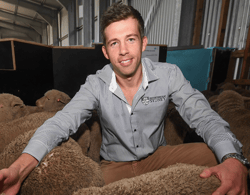
Lecture
Ovine reproduction: latest discoveries in artificial breeding
Artificial breeding plays an essential role in modern reproductive and genetic management. In the sheep industry, technologies such as laparoscopic artificial insemination (AI) and multiple ovulation and embryo transfer (MOET) have now been in use for several decades and continue to facilitate increased genetic gain.
Current research in sheep artificial breeding aims to improve the success and consistency of AI and MOET results while also addressing key challenges that could negatively affect the efficacy, continued use and/or availability of these critical reproductive technologies. Recent research breakthroughs have also facilitated development of new reproductive technologies.
The presentation will outline these recent advances and upcoming work that will underpin the future of sheep artificial breeding. Specific topics to be covered include sperm sexing, alternatives to laparoscopic AI for delivery of frozen semen, and ‘big data’ analytics to predict the success or failure of AI and ET programs.
Day 4. Dr. Giovanni Gnemmi
Spain
Presentation
A renowned expert in bovine reproduction serves as a key member of BOVINEVET INTERNACIONAL SL and as the Director of the Master's Program in Bovine Reproduction at UCV Valencia. With a career spanning since 1993, this specialist has focused on bovine reproductive health, offering expertise in areas such as ultrasound diagnosis, hormone therapy, and early pregnancy detection.
In addition to this role, they work as an adjunct professor at the Lusophone University of Lisbon and provide consultation for large-scale dairy and beef farms across the world. The expert has delivered over 350 training courses in 38 countries, sharing practical knowledge on reproductive management and techniques.
His contributions include publishing two comprehensive atlases on bovine reproductive ultrasound, recognized as valuable resources in the field. A frequent speaker at international events, he has presented at more than 320 conferences, establishing a global reputation. In recognition of his contribution to veterinary science, he received the prestigious Taurus Award in 2023.
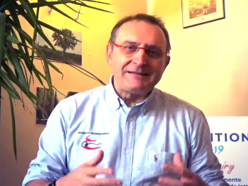
Lecture
The rational and integrated use of reproductive ultrasound in a commercial breeding
Reproductive ultrasonography is not just about determining non-pregnant and/or pregnant cows, but much more. When applied to the diagnosis of the physio-pathology of the ovaries and uterus, ultrasonography has made it possible to eliminate the margin of error produced by palpation of the ovaries (50%) and uterus (70-80% in the definition of physio-pathology).
Today, bovine reproductive ultrasonography offers many splendid diagnostic possibilities, all of which can be drilled down in a few seconds by an excellent sonographer: diagnosis of foetal sex, loss of gestation, twins, pathologies of gestation, foetal malformations, ultra-early diagnosis of non-gestation with Doppler. But ultrasonography also allows the results of synchronisation, pre-synchronisation and re-synchronisation programmes to be implemented, thanks to an accurate reading of the follicular map.
Lecture
Pulmonary ultrasonography, as a key complementary exam in bovine internal medicine
Pulmonary ultrasonography is a fundamental complementary exam in bovine internal medicine. This exam can also be performed perfectly with portable/ultra-portable ultrasound scanners, the same ones that are used for bovine reproduction.
This exam makes it possible to determine the incidence of lung pathologies at weaning, to define the effectiveness of the therapies implemented towards the calf's respiratory pathologies, the efficiency of the diagnosis of respiratory forms developing in the nursery, but also serves to identify each week, which age group, among the calves in the nursery, is at greater risk of respiratory pathologies. This is a rapid, very accurate and non-invasive exam, which all farms, especially large ones, should use routinely today.
Day 4. Dr. Nicolas Escartin
Spain
Presentation
Dr. Nicolás Escartín, a graduate of the University of Zaragoza (Spain), has developed his work in the field of veterinary business, and for several years has spent part of his time in the development and consolidation of ultrasound techniques in meat quality.
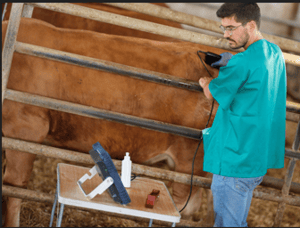
Lecture
Predicting intramuscular fat percentage in live or postmortem animals using real-time ultrasound videos with MeatQtext Software
The MeatQtext software provides objective measurement of key attributes such as loin fat infiltration, subcutaneous fat, loin eye area, and muscle depth in live animals. These measurements are valuable for genetic selection or feedlot management, enabling better decision-making based on precise data. One of the key advantages is that interpretation fees and royalties are eliminated, making it a cost-effective tool. The software requires minimal training, with no need for certification courses, making it accessible for a wide range of users.
MeatQtext was developed and validated using image analysis and artificial intelligence, ensuring fast, accurate, and precise predictions of anatomical and fat infiltration measurements. The results are calculated based on thousands of images for each animal, enhancing the reliability of the data.
The software operates according to recognized industry standards such as BREEDPLAN, Ultrasound Guidelines Council (UGC), and International Committee of Animal Recording (ICAR), ensuring its credibility and applicability in various livestock industries. Moreover, the quality of the MeatQtext project has been acknowledged through financial support from the European Commission, further validating its innovation and effectiveness.
Why Participate in This Event?
- Deepen your knowledge and skills in animal reproduction and imaging.
- Network with peers from the Gulf region and Northern Africa.
- Stay informed on the latest technological advancements and scientific publications.
Fees:
- Seminar: $200 per day
- Seminar with Hotel and Breakfast : $ 300
- Free shuttle from the Hotel to the seminar location
- Free shuttle from the Hotel to the Al Qassim (departure)
- Logistics to Al Qassim (flight, train, other) are not included
Requister your participation
Video
A more subdued subheading

